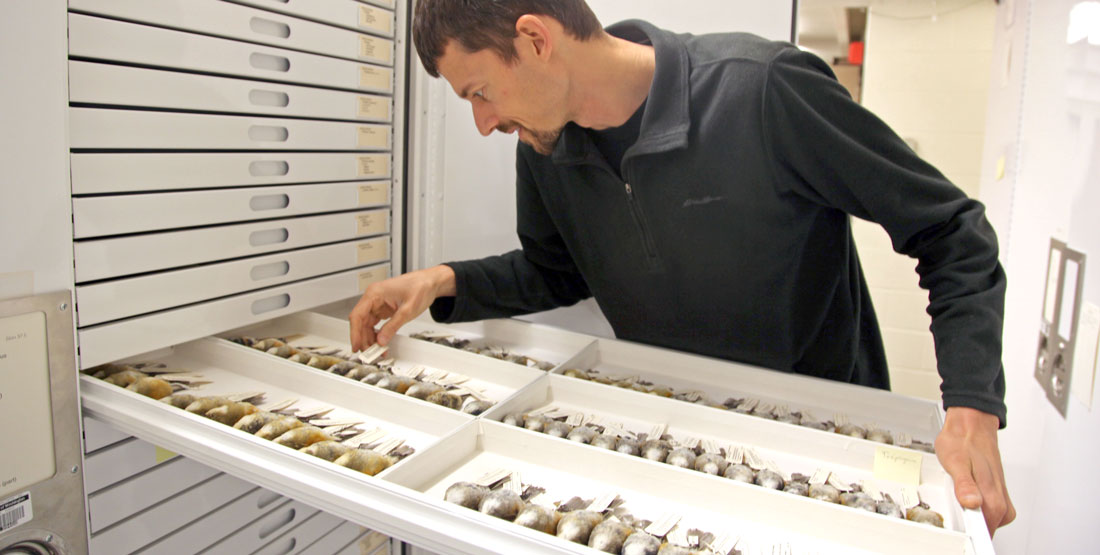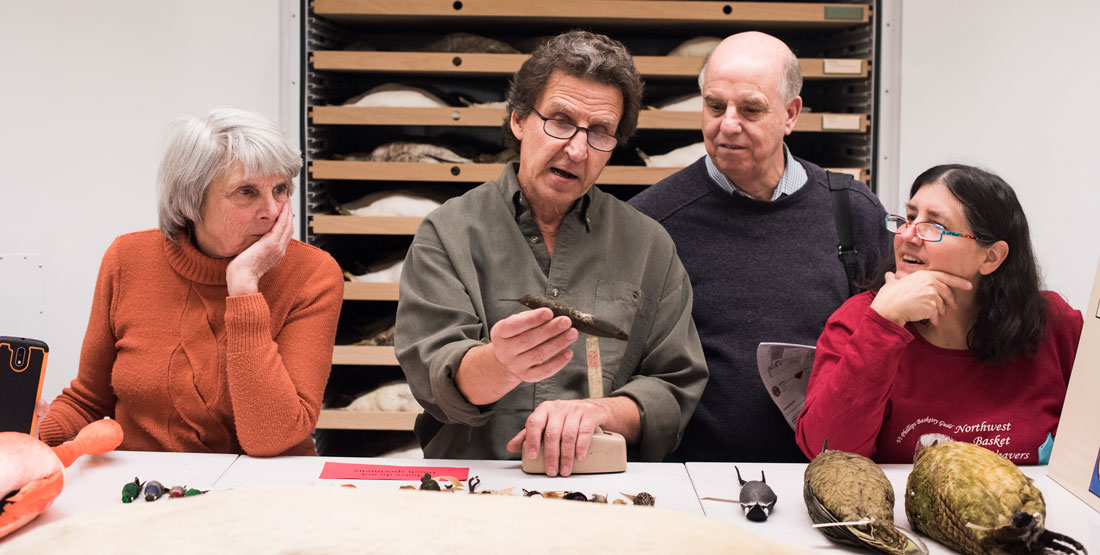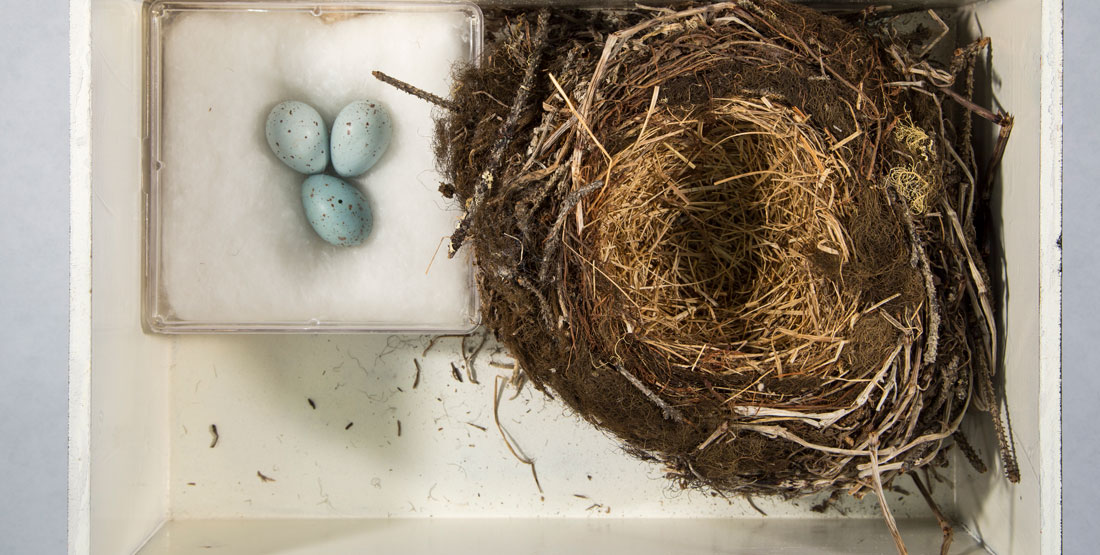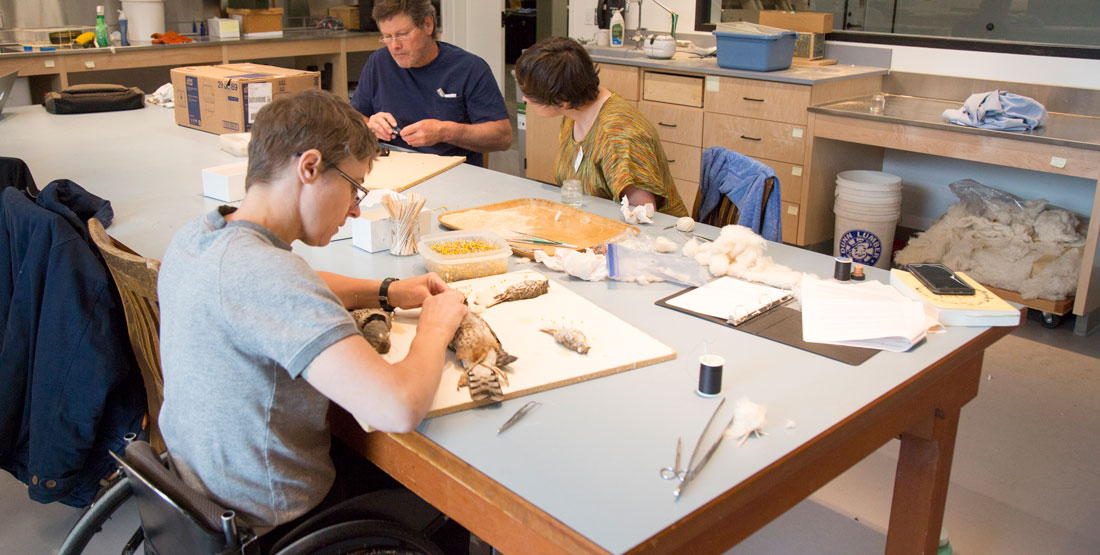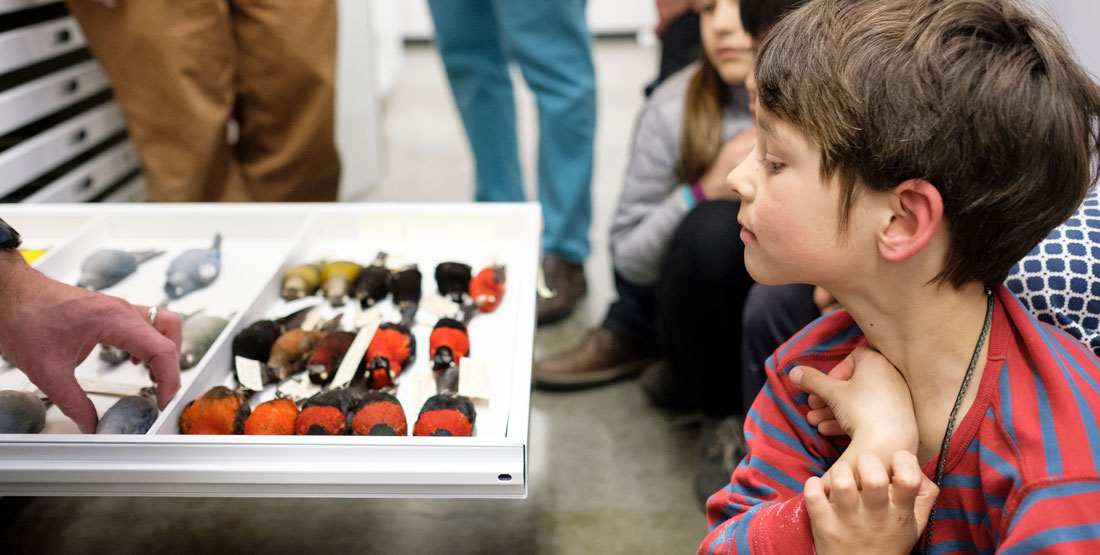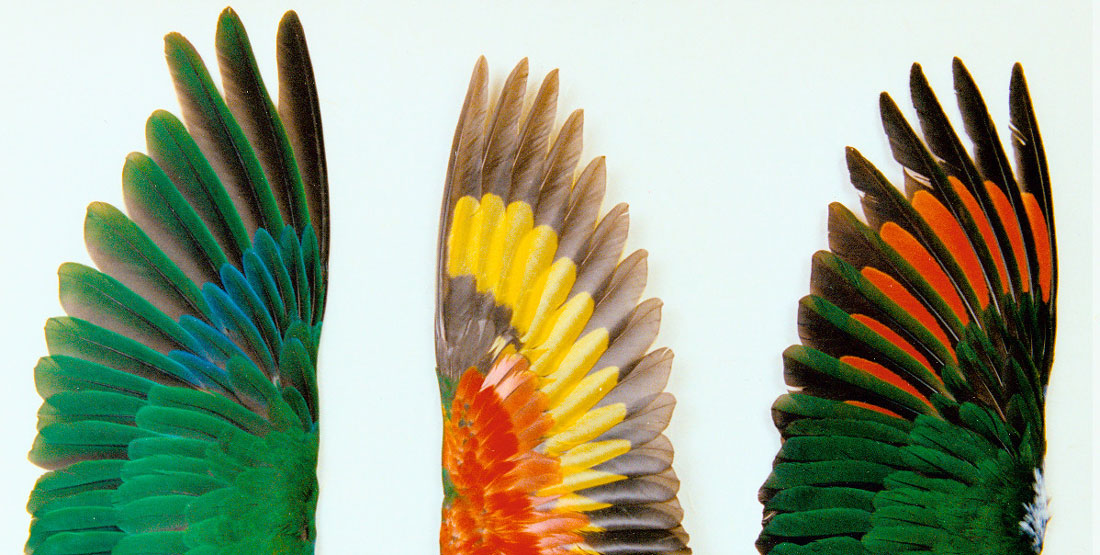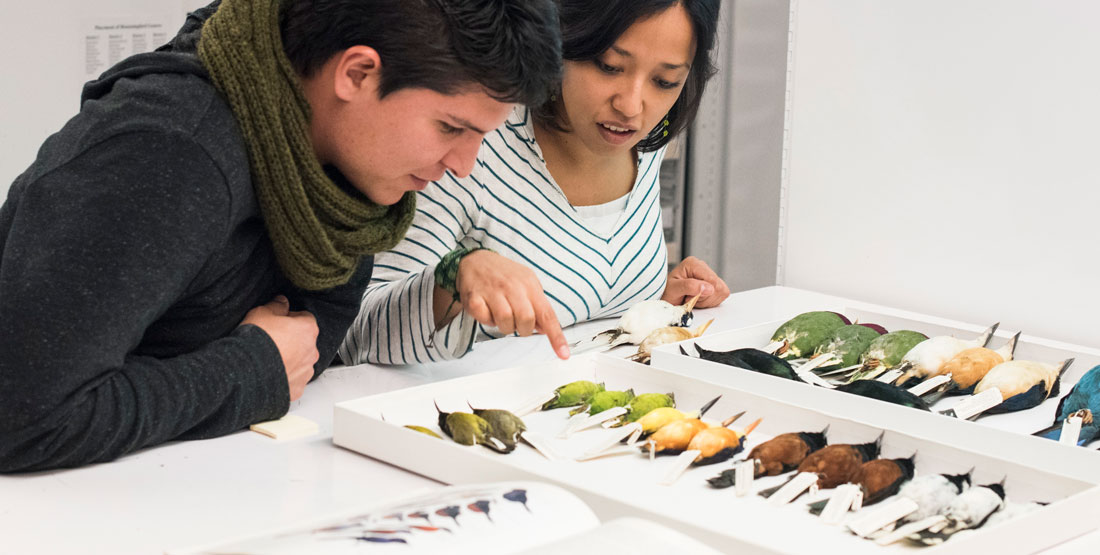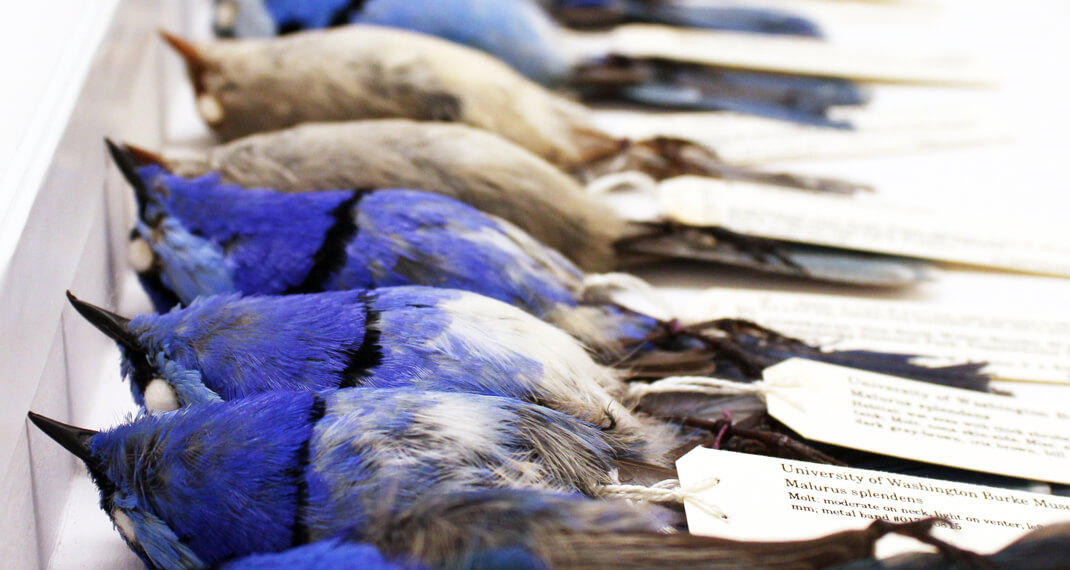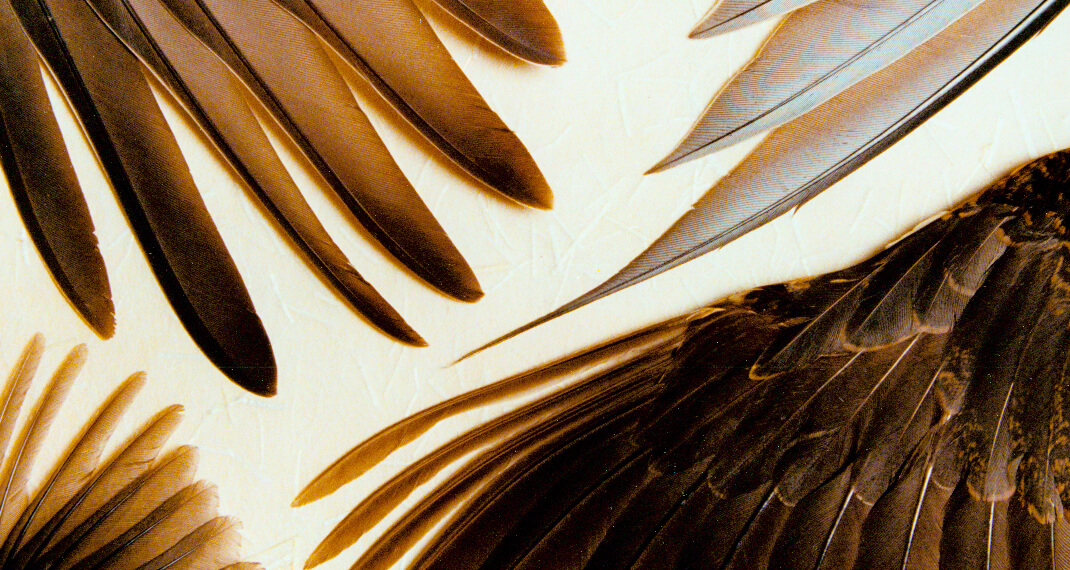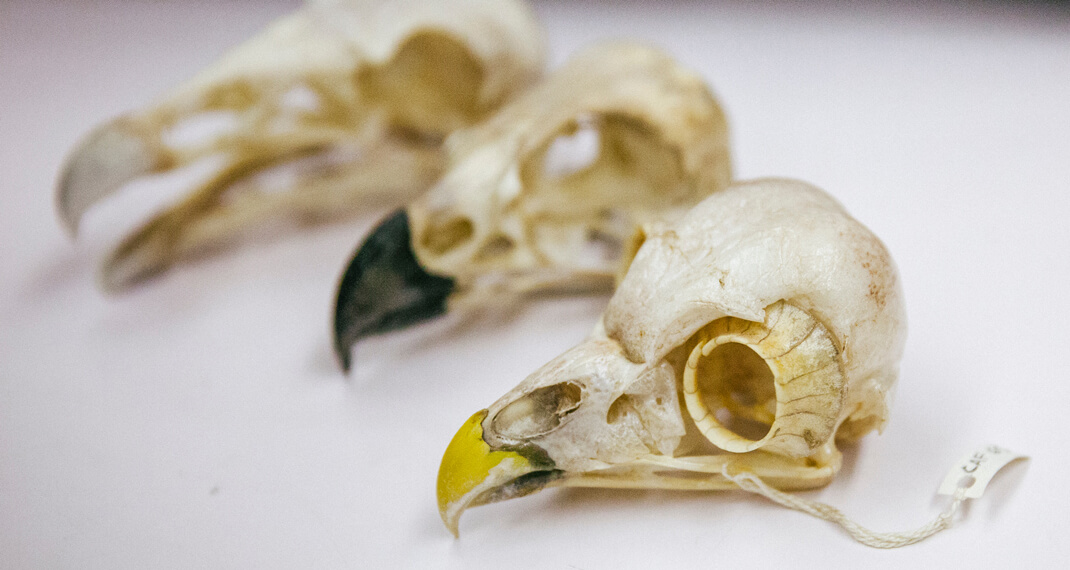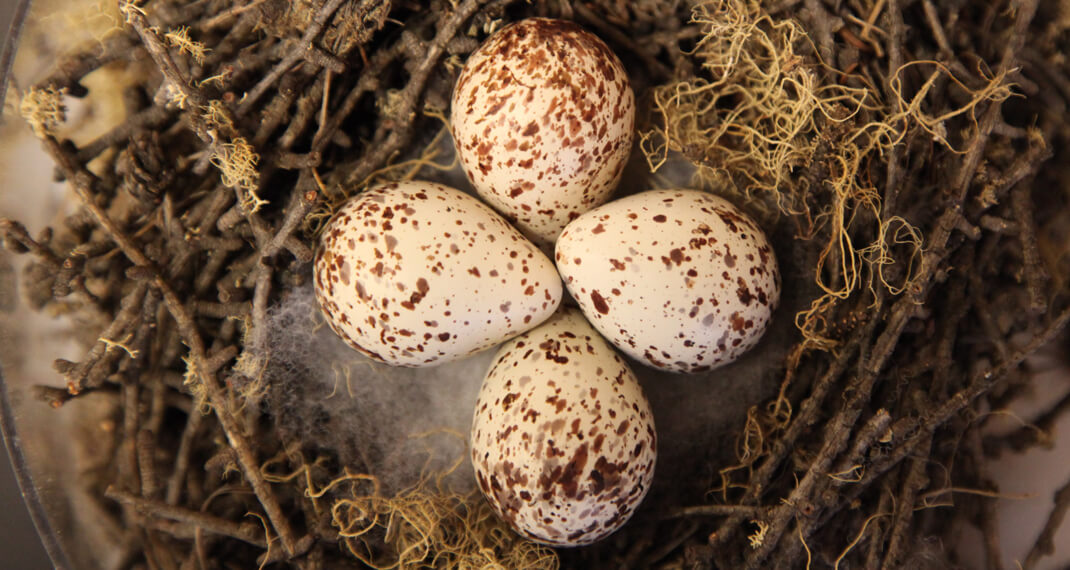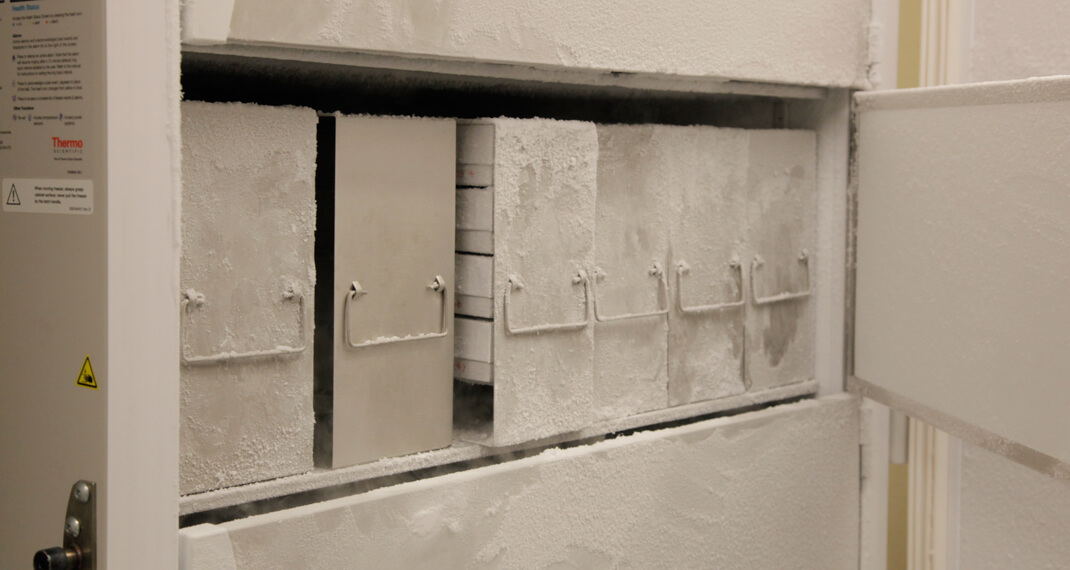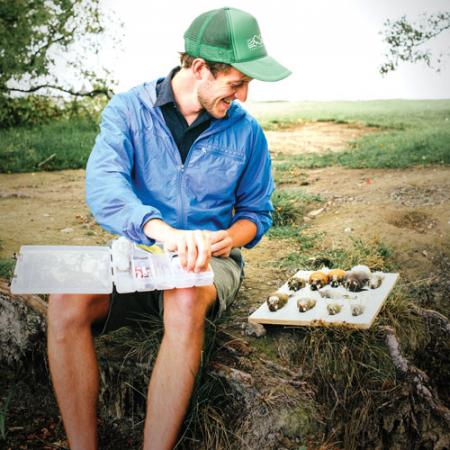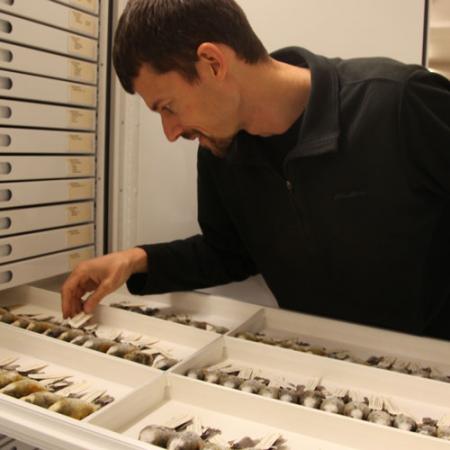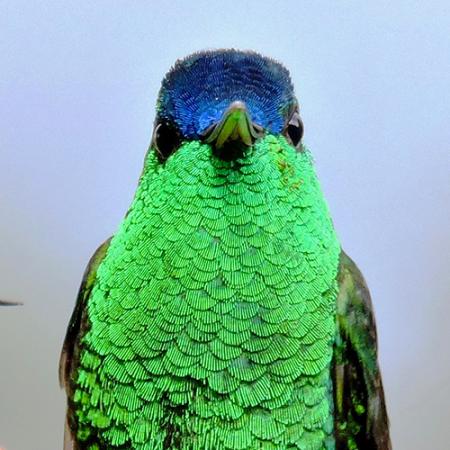Search the Collection
Approximately 100,000 individual records from the collections are accessible through the collections database. Note that most records refer to multiple specimen types from the same individual.
Collection Overview
Specimen types include study skins, spread wings, bird skeletons, egg sets, nests and frozen tissue samples.
Study Skins
Spread Wings
Skeletons
Eggs and Nests
Tissues
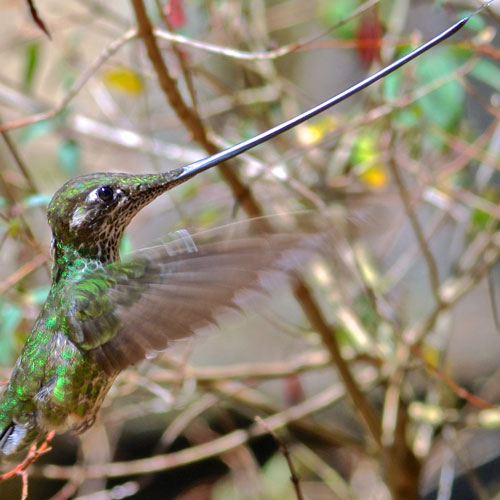
Behavioral Ecophysics Lab
Led by Curator Alejandro Rico-Guevara
The Behavioral Ecophysics Lab focuses on the study of organismal mechanisms (e.g., physiology, biomechanics) in light of biotic and abiotic interactions, with the goal of establishing explicit links between physical laws and ‘rules of life’, at an organismal and ecological scale.
A central challenge of biological studies is to describe functional links between underlying architecture (e.g., genotype, phenotype) and emergent phenomena (e.g., performance, ecological patterns). To meet this challenge, it is necessary to identify and quantify casual relationships between variation in traits, such as wing and bill shape, and corresponding capabilities, such as cost of flight and feeding, of their possessors.
Having this information allows us to unveil the connections between these capabilities and realized patterns (e.g., resource use, competition strategies), and thus their ecological and evolutionary implications. In this sense, nectar-feeding birds stand out as ideal study organisms because scientists have studied the details of their biology, ecology, and evolution for many years. The way in which they find, access, and intake nectar (their efficiency, preferences, and limits) will determine their peaks and ranges of maximal performance on several environmental axes.
For this reason, increasing our knowledge of aspects such as: nectarivore physiological requirements, nectar feeding mechanics, and energetics of floral visitation, will have profound implications for understanding and predicting foraging behaviors and ecophysical responses, as testable biological rules.
Questions & Answers
We’ve pulled together some common questions and answers related to the Burke Museum Ornithology Collection. Do you have question that isn’t answered in the list below? Contact us.
Do you loan specimens for research?
Traditional objects from the Ornithology Collections may be loaned to qualified researchers. For more information, contact us.
For more information on loans of tissue specimens, please visit our Genetic Resources Tissue Loans page.
Can I visit the collection?
The Ornithology Collection is available by appointment only. Please contact us for more information and to schedule an appointment.
Can you help me identify a feather?
Identifying feathers is often surprisingly difficult. Each species has many types, shapes and sometimes colors of feathers, and there are hundreds of species in Washington, so identifying a single feather may take hours even with the resource of our spread wing collection.
We typically cannot accommodate identification requests and recommend the resources below to help you identify your specimen:
-
Field guides, such as the National Geographic Guide to the Birds of North America or the Sibley Guide to Birds, published by the National Audubon Society
-
The Feather Atlas from the U.S. Fish and Wildlife Service covers flight feathers of North American Birds
I found a dead bird. Can I donate it to the Burke?
Salvaging birds you find dead can make an important contribution to the Ornithology Collection. Salvaged birds are prepared as scientific or teaching specimens used by students and researchers around the world.
Each year, the Burke Museum takes in hundreds of birds from wildlife rehabilitation clinics and members of the public. Most were hit by cars, died after hitting windows, were killed by cats, or were victims of natural or man-made disasters. Salvaged birds form an important part of the Burke's extensive research collections and are the core of the Burke's Teaching Collection — used in both K–12 and university education programs.
The Migratory Bird Treaty Act gives federal protection to all but a handful of birds, including some game birds and invasive, introduced species, such as the European Starling (Sturnus vulgaris), House Sparrow (Passer domesticus), and Rock Dove (Columba livia) (Pigeon). It is illegal — and a federal crime — to possess or transport most birds (or bird parts) without a permit issued by the U.S. Fish and Wildlife Service.
In practice, however, the local U.S. Fish and Wildlife Service office and the State Department of Fish and Wildlife allow the public to possess birds for the time needed to deliver them to an approved educational institution, such as the Burke Museum. Thus, if you call one of these offices having found a dead bird, they will likely refer you to the Burke Ornithology department.
The Burke Museum welcomes salvaged specimen donations under the following conditions:
- Please deliver specimens within a sealed container, like a plastic bag, and be sure to include a note inside indicating the date and location found (i.e. city/town).
- If possible, please ensure that specimens are either frozen or in otherwise good condition when delivered.
- Please note that the Burke Museum cannot accept living specimens, nor can we provide monetary appraisals for any wildlife product.
Salvaged specimens may be delivered to the Burke Museum non-public business entrance, which is located at the northeast corner of the building and can be accessed via the intercom outside the door. Deliveries are accepted without an appointment between 8 a.m. and 4 p.m. on weekdays, though please contact Burke Ornithology (burkeornithology@uw.edu) if accommodation beyond this timeframe is needed.
Our Team & Contact
Meet the people within the Burke Museum Ornithology team.
Have a general question?
Additional Resources
We've compiled several online resources from outside of the Burke Museum that may also be of interest.
Burke Museum
Burke Museum
Seattle Audubon
The Cornell Lab of Ornithology
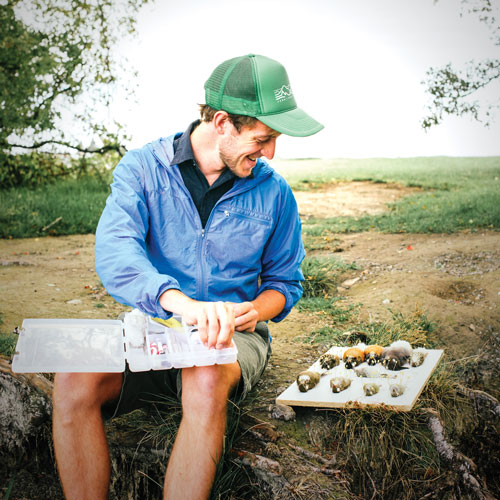
Support Ornithology
Your gift makes it possible! We couldn't do what we do without generous donor support for collections care, research and public outreach.
